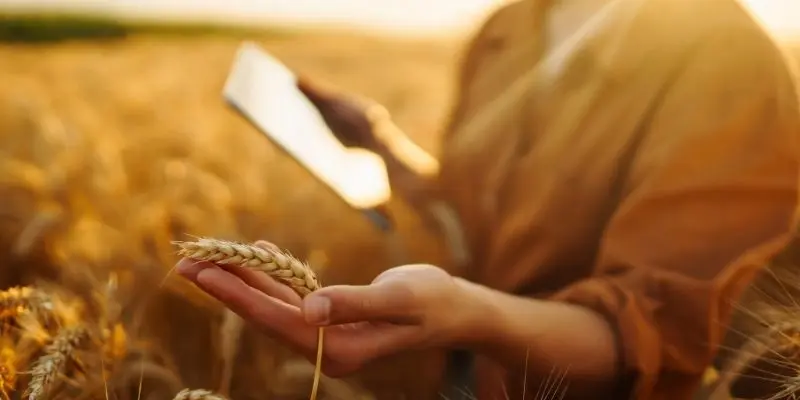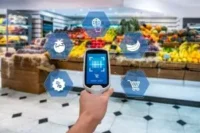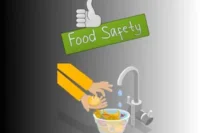Smart Crop Sensors. Farming Smarter, Growing Stronger
Published: 8 Jul 2025
You water your crops regularly, but somehow the yield keeps dropping. You follow traditional schedules, yet some plants thrive while others die. Is the soil too dry? Too wet? Are you over-fertilizing—or not enough? The weather shifts suddenly, and you’re left guessing what your crops need. You’ve tried everything, but the results just aren’t consistent. Why does farming feel like gambling with your hard work? What if your land could tell you exactly what it needs—before it’s too late?
So, guys, without wasting time, let’s jump into the article to learn the Smart Crop Sensors. arming Smarter, Growing Stronger
1. What Are Smart Crop Sensors
- Electronic devices that monitor soil and crop conditions in real time.
- Measure moisture, temperature, humidity, sunlight, and more.
- Connected via IoT to mobile apps or cloud dashboards.
- Use AI to send alerts and recommendations for timely actions.

2. Emotional Relief for Farmers
- Eliminate stress by knowing your crops’ exact condition anytime.
- Replace uncertainty with data-driven confidence.
- Protect your family’s farming legacy with advanced tools.
- Feel supported even during unpredictable weather conditions.
3. Boost Productivity and Income
- Cut water use by up to 50% by avoiding over-irrigation.
- Increase crop yield by up to 30% with timely interventions.
- Reduce fertilizer waste with precision application.
- Save labor time with remote field monitoring and automation.
- Quick return on investment within one or two seasons.
- Reduce water wastage and chemical runoff.
- Support climate-smart agriculture for long-term resilience.
- Contribute to global food security with efficient resource use.
- Align with sustainability goals like Zero Hunger and Clean Water.
5. How the Sensors Work
- Install sensors near the crop root zone.
- Connect to your smartphone or web platform.
- Monitor real-time graphs and alerts.
- Make timely decisions for irrigation and fertilization.
- Adjust based on changing conditions and trends.
6. Real Farmer Experiences
- “My mango yield increased after smart irrigation scheduling.”
- “We saved an entire crop thanks to early alerts from the app.”
- “Now I manage my farm from my home—stress-free and smart.”
7. Who Should Use These Sensors
- Small farmers looking to improve yield and cut costs.
- Commercial farms managing large areas efficiently.
- Urban gardeners and greenhouse growers needing precision.
- Agricultural researchers and agritech advisors.
FAQs about Smart Crop Sensors. arming Smarter, Growing Stronger
Here are some of the most frequently asked questions about the Smart Crop Sensors. arming Smarter, Growing Stronger
It’s easy to confuse them with regular farming tools, but smart crop sensors are advanced devices that track soil and crop conditions in real time. They help farmers know when to water, fertilize, or protect crops—based on actual data, not guesses.
Not really. Some sensors measure only soil moisture, while others also detect temperature, humidity, sunlight, or even nutrient levels. Choosing the right type depends on your crop, soil, and what problems you’re trying to solve.
It might seem like one sensor could cover it all, but most sensors have specific purposes. You may need a combination—like one for moisture and another for weather conditions—to get a complete picture.
It’s confusing at first, but start by identifying your main problem—like overwatering, poor soil, or climate stress. Then choose a sensor type (e.g., moisture sensor, temperature sensor) that targets that issue.
Not all sensors work well in every soil type. For example, sandy and clay soils absorb and hold water differently, so it’s important to pick a sensor that’s calibrated or suitable for your specific soil.
8. Final Thought
The opening paragraph highlights the everyday confusion and uncertainty farmers face—watering crops on time but still seeing poor yields, struggling to understand inconsistent plant health, and feeling helpless against unpredictable weather. It captures the emotional toll of relying on guesswork in farming, where even years of experience can’t always predict what crops need. The core message is that without real-time insight, farming becomes a risky game. Recognizing the importance of smart crop sensors means shifting from uncertainty to clarity—where data replaces doubt and every farming decision is backed by precision.

- Be Respectful
- Stay Relevant
- Stay Positive
- True Feedback
- Encourage Discussion
- Avoid Spamming
- No Fake News
- Don't Copy-Paste
- No Personal Attacks

- Be Respectful
- Stay Relevant
- Stay Positive
- True Feedback
- Encourage Discussion
- Avoid Spamming
- No Fake News
- Don't Copy-Paste
- No Personal Attacks





